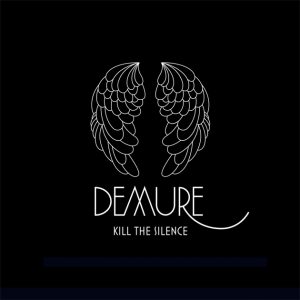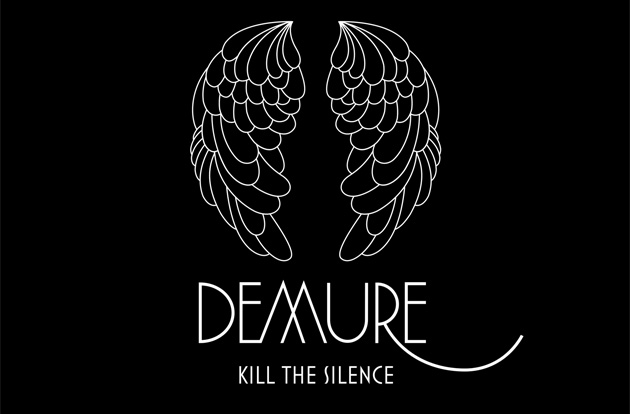 Swedish EDM artist, John Dahlbäck, has been producing his own music since he was only 15 years old. And not only has he been prolific in musical output, but he even started his own label, Pickadoll Records, in his later teenage years. The last five years have proved to be just as successful as the beginning of his career. His 2008 release, “Winners and Fools” gained much critical acclaim throughout Europe, especially in France. In 2011, Dahlbäck’s work could be found spanning multiple labels including Toolroom and Defected, and one of his newest singles, “One last Ride,” has been played on National Radio in Sweden. His newest project, Demure, takes a step back from his usual hard-hitting dance tracks, and explores a quieter, more relaxed sound. His first release under this name, “Kill the Silence,” is a testament to the artist’s ability to transform his music into anything he chooses. Furthermore, the album features his sister Erika Gellermark as the vocalist, demonstrating the talent running in his family’s veins.
Swedish EDM artist, John Dahlbäck, has been producing his own music since he was only 15 years old. And not only has he been prolific in musical output, but he even started his own label, Pickadoll Records, in his later teenage years. The last five years have proved to be just as successful as the beginning of his career. His 2008 release, “Winners and Fools” gained much critical acclaim throughout Europe, especially in France. In 2011, Dahlbäck’s work could be found spanning multiple labels including Toolroom and Defected, and one of his newest singles, “One last Ride,” has been played on National Radio in Sweden. His newest project, Demure, takes a step back from his usual hard-hitting dance tracks, and explores a quieter, more relaxed sound. His first release under this name, “Kill the Silence,” is a testament to the artist’s ability to transform his music into anything he chooses. Furthermore, the album features his sister Erika Gellermark as the vocalist, demonstrating the talent running in his family’s veins.
The opening track, “Intro,” is something out of a 50’s science fiction movie. The track is a soundscape filled with malfunctioning machinery, spacey synth, and orchestral strings. One of the highlights of the track is its use of acoustic piano, which adds a lush, full texture to the music. The ending of the tune exhibits some bizarre sound manipulation: a slow massing of all the musical elements at play until an impenetrable wall of sound is built between listener’s headphones. A very expressive track on the whole, but it could have transitioned better into the second song. Also, by labeling the track “Intro,” Dahlbäck is running the risk of asking his listeners to view the album as a complete work, rather than a collection of songs.
The second track, “Ley,” takes a much different approach than track one. That is, while “Intro” is full and thickly layered, “Ley” is raw and minimalistic, incorporating acoustic drum set, bongos, and what sounds like a synth didgeridoo. The melodic line sounds as if it was played on an Odnes Martenot, fluctuating dazedly between notes. The overall feel is ominous, as the track does a good job building suspense.
Dahlbäck continues to diversify his music in track three, “You Wouldn’t Know.” The opening is gritty, sounding like an out-of-tune distorted guitar. When Gellermark enters at thirty seconds, the music assumes something of an indie pop feel, with a simple but prominent drumbeat and the use of acoustic tambourine. Synthesizer takes more of a backseat role in this track, but mixes well with the other, more prominent musical elements.
This track reminded me a bit of Mumford and Sons, which makes think that it isn’t EDM. Rather, I’d classify this track as Indie pop influenced by EDM. But this proves that Dahlbäck is not afraid to stray from his comfort zone; he’s willing to go where the music takes him, and that’s something to be admired.
Skip ahead to track seven, “Kill the Silence,” where Dahlbäck does something unique with the concept of a piano ballad. Acoustic tambourine heads the beat, supporting a piano line with a chord heavy left hand and a jazzy right. The track is also drenched in a ghostly ambience sounding like inside of a wind tunnel. Finally, the lyrics are surprisingly strong, “Reflected in your eyes, something older, something colder…Kill the silence in our hearts.” A very solid piece of music overall. It uses conventional instrumentation and the well-established ballad form in a tasteful and creative fashion, making an old idea feel fresh and moving.
I feel at this point in the review, it’s fair to mention that I wasn’t entirely satisfied with the album. While Dahlbäck is very talented at building energy in his music, I felt that, in many of the album’s earlier tracks, there was rarely a section of release. However, I finally found what I was looking for in track eleven, “Nowhere.”
This track is much slower than its predecessors, again featuring acoustic piano as its main instrument. But the hard-hitting drumbeat is where this track distinguishes itself as it gives the music a headbanger feel. We experience that much desired release about three-fourths of the way through with an explosion of a fuzzy synth line that sends the music into blissful chaos, ending finally with a gentle, repeated ringing, like distant church bell.
While this song isn’t the strongest on the album, it exhibits the most complete energy arc. Which is to say, the track has a definitive idea and executes it well. Where it lacks is in its instrumentation which is too similar to what’s already been heard earlier on the album, making the sonic landscape difficult to label as “unique.”
The final track, “Who I Used to Be,” enters with heavy jazz drumming and smooth electric guitar, and wait, a melodica used for the melody? Not a bad addition in my opinion, as it allows the track to stand out amongst the other tracks. The songwriting is pretty good as well. The melodies all interact with each other, respond to each other, and copy each other well, making the song feel like a musical conversation. The bass isn’t too prominent on this track, and not really on this album as a whole now that that I think about. Mostly root notes, which is too bad, because there are ripe opportunities for jazz or funk bass within the music. I enjoyed this track, but it struck the same somber, reflective mood heard elsewhere on the album.
In the end, “Kill the Silence” has a lot to offer, especially in the genre diversity heard at the beginning of the album. Which brings me to my next point: the album is markedly top-heavy and tends to fall back on similar structural and mood patterns at the end. But the beginning is ripe with creative energy; it tastefully employs both acoustic and electric elements, and the songs are well written. The vocals work well for the music as well, but they sound almost the same on every track (save maybe the third track), which is unfortunate, as Gellermark clearly holds the talent to expand on the many musical ideas at play. As mentioned before, this music isn’t really EDM; it’s Chillout, and tends to take refuge in smooth jazz. However, I like that Dahlbäck is willing to go beyond genre restrictions and make music meant to be listened to at home or in a car and not really on a dance floor. So, if I had to make a single statement about this album, I call it a nice change of pace.




